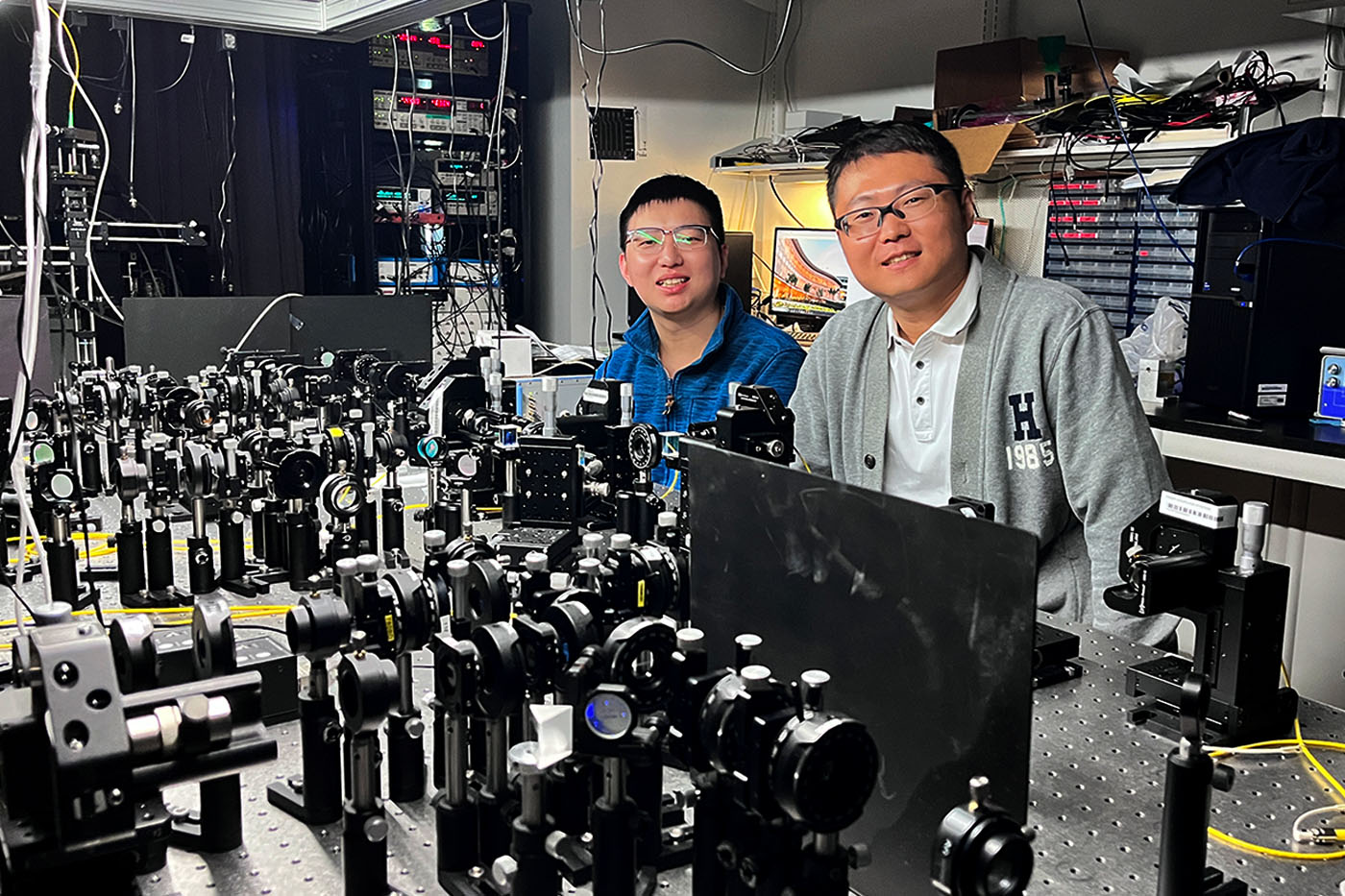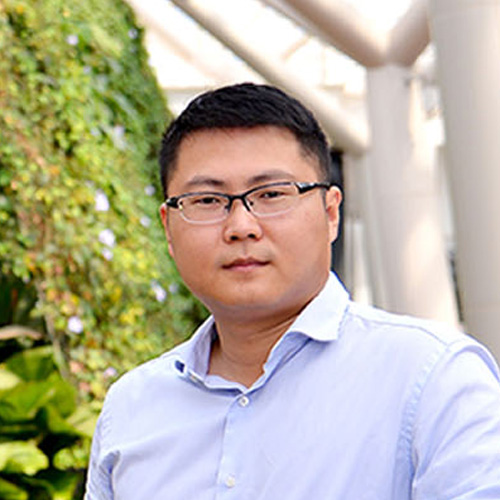Highlights
Quantum states mapped efficiently with overlapping measurements
 (From left) Co-authors NTU PhD student Yang Zhengning and CQT Principal Invistigator Gao Weibo with their experimental setup. With their team, they performed quantum overlapping tomography on a four-qubit and a six-qubit state.
(From left) Co-authors NTU PhD student Yang Zhengning and CQT Principal Invistigator Gao Weibo with their experimental setup. With their team, they performed quantum overlapping tomography on a four-qubit and a six-qubit state.
Faced with a problem too big to solve? You might get advice to break it into smaller chunks. That approach turns out to help in quantum tomography too, where researchers want to be able to characterise large quantum states with few measurements.
Quantum states of tens to thousands of qubits are the starting point for some forms of quantum computing and other applications. However, it is challenging to measure the state of such large systems to be sure they match what’s needed.
CQT Principal Investigator Gao Weibo and his group at the Nanyang Technological University, Singapore, have become the first to evaluate the technique known as “quantum overlapping tomography”. The method would cut the time to characterise a six-photon state in their setup from an estimated 120 days to 80 hours. The technique was first theoretically proposed by Jordan Cotler and physics Nobel Laureate Frank Wilczek in 2020.
Reporting their results in Physical Review Letters on 3 February 2023, the researchers write: “This scheme is directly applicable to quantum states with a broader range of structures and larger scale, which could be significant for the future of quantum information.” Weibo’s co-authors are Yang Zhengning, Ru Shihao, Cao Lianzhen and Nikolay Zheludev.
Parallel measurements
Tomography involves learning about a quantum state by measuring many copies of the state. Because quantum physics says particles can exist in superpositions, which translate to probabilities of different measurement outcomes, the measurements must be repeated many times to estimate the probabilities.
Researchers must also measure each particle in different ways, checking each of the different measurement bases. For example, the polarisation of a photon would need to be measured along the x, y and z bases. Then, using the data, researchers can statistically estimate the state of the system.
Typically, to perform the conventional “full state tomography” on a quantum system, every qubit is measured on the full set of measurement bases. As one qubit can be measured on three bases, an n-qubit system would have to be measured 3n times. As a system grows, the number of measurements, and so the time needed to complete them, grows exponentially.
Instead of trying to obtain a complete picture of the system, quantum overlapping tomography aims to extract critical information in less time. The large quantum system is divided into sets of smaller subsystems, with the subsystems chosen such that they overlap. Because measuring one subsystem extracts information about all other subsystems that overlap with it, the subsystems are effectively measured in parallel. Researchers can estimate the state of the subsystems with far fewer measurements on fewer measurement bases.
The group used both approaches in their work using entangled photon pairs in a four-qubit state. To perform full state tomography on the four-qubit state, the group needed around 12 hours to measure the 81 sets of bases. In contrast, using quantum overlapping tomography, the group needed just around 2 hours to complete measurements with 15 sets of bases.
“Performing full state tomography on larger systems requires exponential time but our optical system would not be able to stay stable for so long,” says Zhengning, who is first author of the paper and also a PhD student at NTU. “With quantum overlapping tomography, we can measure something that we could not measure before.”
Quantum overlapping tomography also allowed the group to measure a six-qubit state on 21 sets of bases in 80 hours. Full state tomography would not have been feasible because it would require an estimated 120 days to measure 729 sets of bases.
Reliable estimations, faster
The group used the measurement data from their four-qubit setup to compare the performances of quantum overlapping tomography and full state tomography. By statistically estimating the original quantum state, they confirmed that quantum overlapping tomography and full state tomography gave similar estimates of the quantum states. Furthermore, if the quantum states were calculated from an equal number of measurements, quantum overlapping tomography gave more precise estimations than full state tomography.
“As we go through all the works on quantum overlapping tomography, we find ‘overlapping’ is a powerful tool to extract information from a quantum state efficiently,” Zhengning told the phys.org news site.
As next steps, the researchers’ goals include reconstructing the subsystems with even fewer measurements.
Learn more
Related Stories
 | Meet a CQTian: Gao Weibo July 20 2022 |






